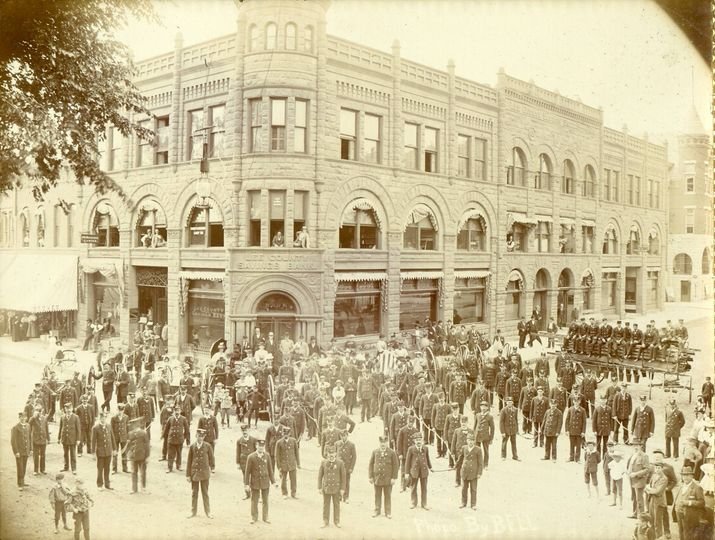
FORT MADISON FIRE MUSEUM
A Look Back: The History of Fort Madison’s Fire Department
The first organized effort to protect Fort Madison from fire dates back to October 1841. At that time, the town's board of trustees passed an ordinance requiring all building owners within town limits to equip their structures with leather fire buckets. Each building needed at least one bucket if it had a stove or fireplace, with additional buckets required for buildings with multiple flues or fireplaces. These buckets had to be kept in an easily accessible location in case of fire. A fine of $1.00 per day was imposed on anyone who failed to comply by the November 1st deadline.
Records from 1841 to 1874 provide little insight into further fire protection efforts. However, in the spring of 1874, the city took a major step forward by purchasing a Silsby steam fire engine, two hose carts, and 1,500 feet of hose. A volunteer fire company was soon established to operate the new equipment. Initially, the apparatus was stored in a local livery stable until more permanent facilities could be arranged.
When Fort Madison was originally platted by the government, the lot at the northwest corner of Fourth and Market Streets had been set aside for a public market. A brick market house was built there and later repurposed for use by the newly formed "Gem City Fire Company." That historic building still serves as the City Hall of Fort Madison.
In the summer of 1874, three cisterns were constructed along Fourth Street—at the intersections of Pine, Vine, and Maple Streets—to provide a reliable water supply for firefighting. Two years later, in 1876, a hook and ladder truck was added to the department’s equipment.
The original Silsby engine, affectionately named "Gem City," was eventually rebuilt and continued to serve the department for many years. On October 25, 1913, a major modernization occurred with the introduction of a combined automobile chemical engine and hose cart. This new apparatus carried 200 feet of chemical hose and 1,200 feet of water hose, significantly improving the department’s firefighting capabilities.
By the early 20th century, Fort Madison’s fire protection system included a paid staff of six firefighters stationed at the central station, supported by six volunteer companies:
Phoenix No. 1 – 10 members
George B. Inman No. 2 – 10 members
Boss Hose Company No. 3 – 10 members
J. D. M. Hamilton No. 4 – 10 members
German-American No. 5 – 10 members
Fort Madison No. 6 – 20 members
Additionally, the Atchison, Topeka & Santa Fe Railroad maintained its own fire company to protect its shops and roundhouses located in the western part of the city.
Exhibit Displays: Take a closer look!
Historical Pictures
The 1873 Silsby Fire Pumper in the 1950 Tri-State Rodeo parade. Passengers and team owner unidentified.
1906 Rolla Hook and Ladder Company No 1 with the 1873 Silsby steam pumper fire engine.
West End Engine House, station #2, Fort Madison, IA. Circa 1918.
Fort Madison's 1873 Silsby fire engine is fired up on the hillside in this photo.
The Fort Madison Central Fire Station in 1911 with Roby & Don pulling the 1873 Silsby Fire Engine.
Fort Madison Fire Dept. Hose Co. #2
Fort Madison Fire Department poses for a group portrait around 1900. Two law firms occupy the second floor of the bank building on left side of the photograph. More patrons can be seen in the bank lobby through the windows.





















